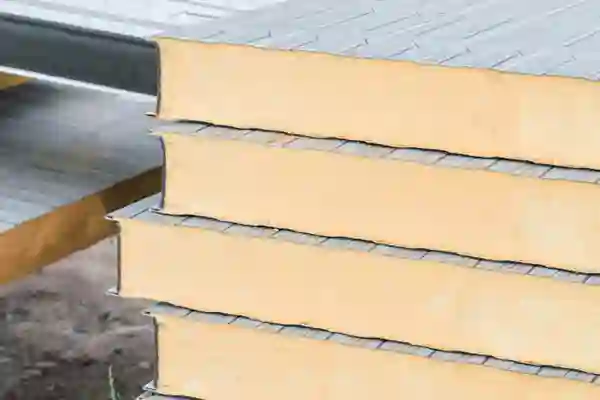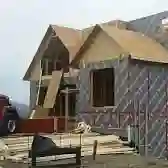Fire safety during construction and renovation depends heavily on the selection of appropriate materials which help control fire spread and smoke movement. Fire resistant expanding foam functions as a vital material which provides insulation and gap sealing while showing improved heat resistance. The actual heat resistance level of this material remains unclear to many users. The question remains whether expanding foam provides complete protection against heat exposure. The following analysis examines fire rated expanding foam through scientific investigation of its operational range and functional boundaries.

What is Fire Resistant Expanding Foam?
Fire resistant expanding foam functions as a polyurethane-based substance which expands after application to seal cavities while creating an impermeable barrier that stops fire from spreading.
Composition and Chemical Properties
Fire rated expanding foam contains fire retardant additives which prevent ignition and reduce the speed of combustion. The additives used in fire retardant materials include graphite and halogenated compounds and intumescent agents which activate when heated. The production of Graphite polystyrene foam utilizes imported new materials and advanced manufacturing techniques. The product maintains all standard EPS insulation board characteristics while achieving Class B1 fire resistance which is considered difficult to achieve.
Differences Between Fire Resistant and Standard Expanding Foams
Standard expanding foams function well for gap sealing yet they do not provide any fire protection. Fire resistant versions of foam products contain flame retardant materials which fulfill particular safety requirements. The F-flame retardant grade has received certification from the United States Safety Testing Laboratory (UL) with document certification number E360952. These products qualify for essential applications that involve wall penetration protection and electrical fixture encasement.
How Fire Rated Expanding Foam Works
The study of foam behavior under harsh conditions enables better comprehension of their function in passive fire protection systems.
Reaction to Heat and Flame Exposure
Fire rated foams contain special properties which trigger their reaction to high temperatures through char formation or intumescence that generates a protective barrier against heat and flames. The flame retardant grade meets Class B1 (GB8624-2012) standards and the prepared panels and molded products demonstrate self-extinguishing fireproof capabilities.
Expansion Mechanism Under High Temperatures
The application of heat causes intumescent foams to expand into volumes that exceed their initial dimensions by several times. The swelling process creates a better seal through gap filling and generates an insulating barrier which reduces heat transfer rates.
Sealing Capabilities in Fire-Prone Areas
The foams provide superior sealing capabilities for protecting pipes and ducts and wall cavities from fire spread. The foams keep their shape during fires which enables them to block fire spread between different areas.
Key Factors That Influence Heat Resistance
The success of fire-resistant expanding foam depends on multiple essential elements.
Temperature Thresholds and Performance Ratings
The testing of high-quality foams for performance occurs between 200°C and 1000°C based on their specific chemical composition. The fire-resistant properties of SEPC achieve the challenging Class B1 rating according to GB8624-1997 Grading Method for Combustion Performance of Building Materials.
Duration of Fire Exposure and Structural Integrity
The foam maintains its initial resistance level but continuous exposure to heat causes performance degradation throughout time. The foam’s ability to retain its shape during long periods of high heat exposure determines its effectiveness for containment purposes.
Compliance with Industry Standards and Certifications
Choose products that carry UL (Underwriters Laboratories) certification as well as GB8624-2012 (China) and EN13501 (Europe) standards. The production process requires F-flame retardant grade materials to prevent any non-flame retardant substances from entering the mixture. The national standards for F-flame retardant grade include adiabatic molded polystyrene foam (GB/T10801.1-2002) and Classification of combustion performance of building Materials and products (GB8624-2012).
Common Applications in Construction and Safety
The dual functionality of insulation and flame resistance in fire rated expanding foams makes them popular for different industrial applications.
Use in Residential and Commercial Buildings
The sealants are used to seal window frames and door jambs and ceiling joints and service penetrations in homes and offices.
Role in Passive Fire Protection Systems
The foams function as components of passive fire protection systems which maintain fires inside specific areas until active suppression systems activate.
Integration with Other Fireproofing Materials
The combination of fire rated foams with mineral wool batts and gypsum boards and graphite panels creates an enhanced safety system for buildings. The Graphite polystyrene material provides superior thermal insulation capabilities.
Limitations of Fire Resistant Expanding Foam
These materials offer various benefits yet users need to recognize their specific constraints before using them.
Misconceptions About “Heat Proof” Claims
No expanding foam product exists that can withstand heat exposure. These products are made to delay ignition but they do not provide permanent protection against open flames or high temperatures.
Conditions Where Performance May Degrade
The performance of the product becomes compromised when operating outside of its rated temperature range or when installed incorrectly. The combination of EPS materials that are not rated for flame resistance will decrease the overall flame resistance of the product. The F-flame retardant grade requires proper processing to prevent non-flame retardant substances from entering the system which will result in decreased flame retardant performance.
Maintenance and Inspection Considerations
Environmental factors such as moisture and UV exposure can cause damage to the material over time which affects its durability. The system remains effective through regular inspections which focus on utility penetration areas that require special attention.

Comparing Different Types of Fire Rated Foams
The selection of the correct type depends on your project needs which include expansion rate and curing time and thermal rating.
One-Component vs. Two-Component Foams
The curing process of one-component foams depends on environmental moisture but two-component systems achieve faster curing through internal chemical reactions which benefit big projects that require rapid completion.
Intumescent vs. Non-Intumescent Formulations
Non-intumescent foams depend on chemical additives for fire protection while intumescent foams expand physically when heated.
Advantages of Intumescent Technology
The sealing process of these materials occurs through physical barrier creation which blocks airflow paths during combustion events thus providing superior sealing in electrical cable penetrations and pipe chases.
Situations Best Suited for Each Type
Intumescent materials should be used in areas with expected movement (such as around HVAC lines) yet non-intumescent materials work best for static joints which need to maintain their dimensions after installation.
Introducing HUASHENG: A Trusted Supplier of Specialized REPS Products
HUASHENG leads the industry through its work on creating state-of-the-art flame-resistant EPS solutions for contemporary construction requirements.
Overview of HUASHENG’s Product Categories
HUASHENG provides a range of insulation products which serve various needs from standard insulation to advanced passive house insulation requirements.
Common Grade
The fabric is designed for standard applications that do not require flame-resistant properties.
Flame Retardant Grade
The F-flame retardant grade meets United States Safety Testing Laboratory (UL) certification requirements for B2 standard building materials.
Graphite Grade
Graphite polystyrene foam provides better thermal insulation performance at a lower price point than other materials with similar effectiveness.
Environmental Protection Grade
This solution works best for projects that need to reduce environmental impact through low emission levels while maintaining complete safety standards.
Carbon Black Grade
The material provides antistatic functionality together with flame resistance at a moderate level which makes it suitable for electronics packaging applications.
Customized Solutions for Specific Needs
HUASHENG acquired twin screw extruder production equipment from Europe in 2015 to provide customized solutions for clients worldwide based on their specific requirements for density and particle size and expansion ratios.

Final Thoughts on Heat Resistance in Expanding Foams
The selection of fire-resistant expanding foam depends on your environment’s risk level and compliance with local building regulations. The correct installation of high-quality HUASHENG products by trained professionals with certified materials ensures reliable protection against flames although no product provides absolute fireproofing.
FAQs:
Q1: Does fire-resistant expanding foam provide complete fireproofing?
A: No, fire-rated expanding foam resists ignition and controls flame spread during initial fire exposure, aiding safe evacuation and suppression, but it’s not fully fireproof.
Q2: Is fire-rated expanding foam safe near electrical outlets?
A: Yes, UL94 or similar certified fire-rated foam resists ignition from small sparks and heat, making it safe for use near electrical components.
Q3: How long does fire-resistant foam maintain its protective properties?
A: Fire-resistant foam lasts multiple years if installed correctly, protected from UV light and moisture, with periodic inspections to ensure effectiveness.






